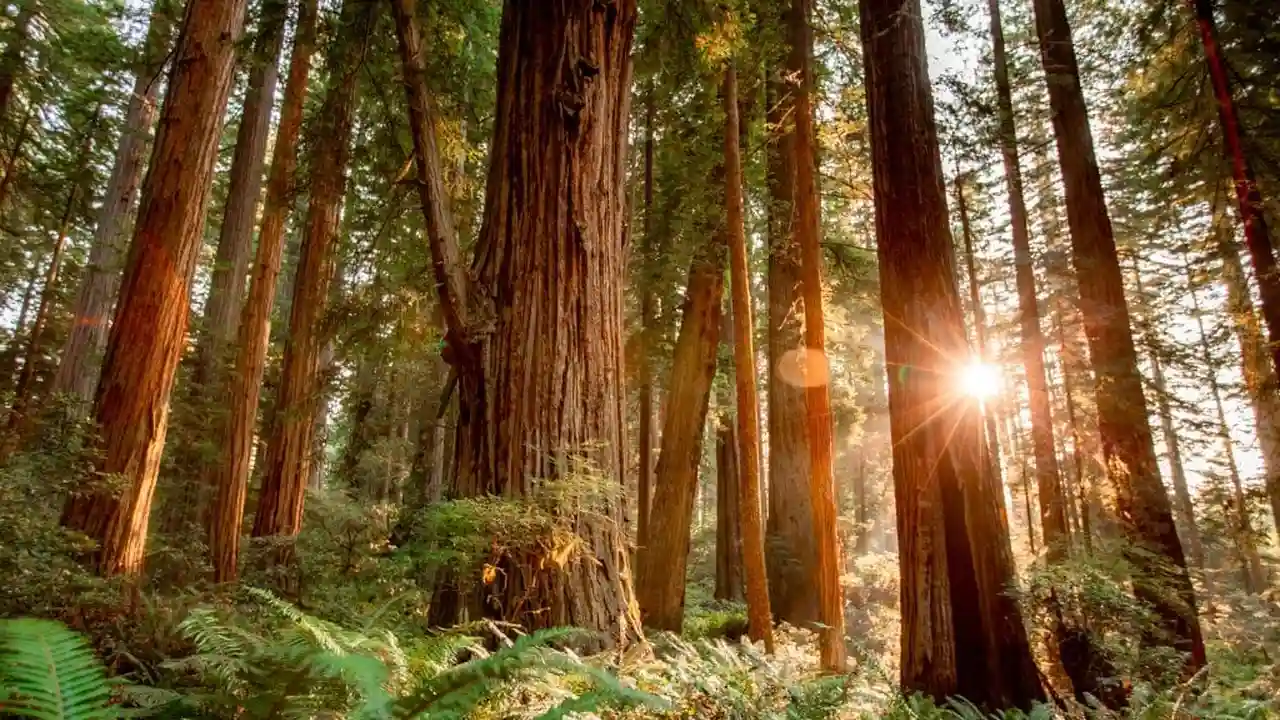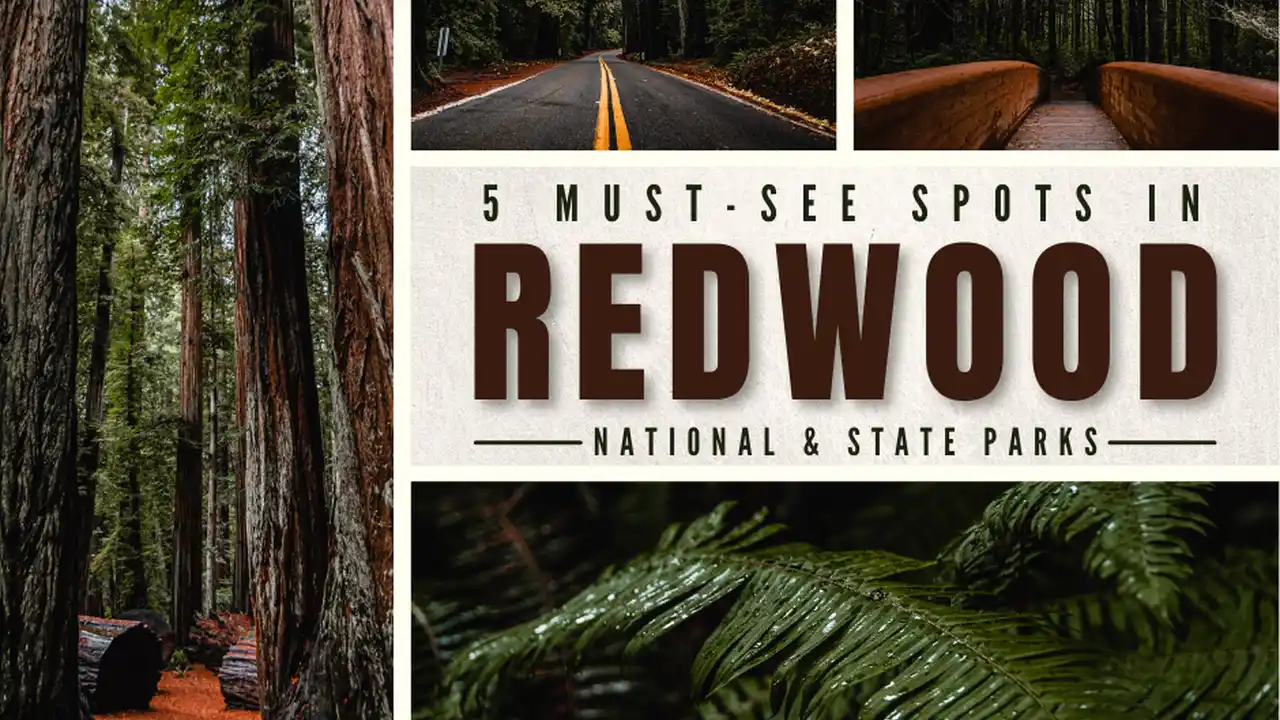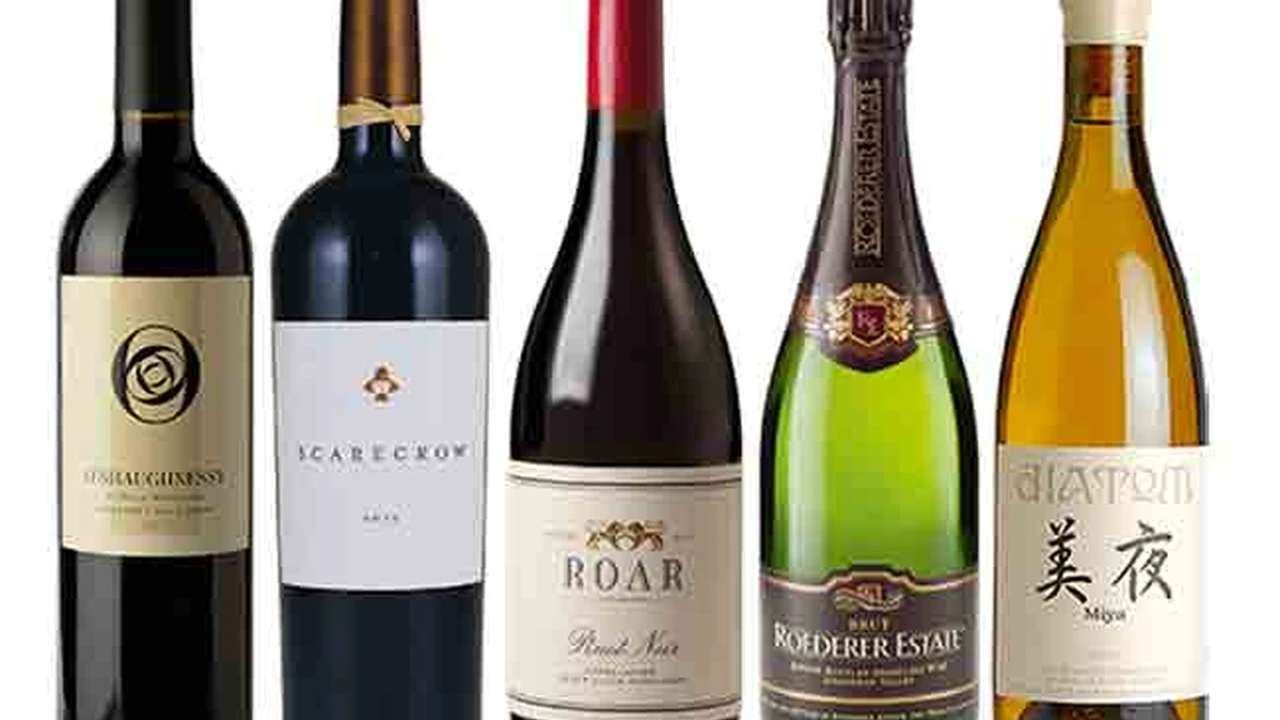3 Day Redwood National Park Itinerary

Planning Your Redwood National Park Camping Adventure
So, you're thinking about camping in Redwood National Park? Excellent choice! You're about to immerse yourself in a world of towering trees, serene trails, and unforgettable experiences. But before you pack your bags and hit the road, let's talk about planning. Redwood National Park camping requires a bit of forethought, especially when it comes to securing a campsite.
The park offers a variety of camping options, from developed campgrounds with amenities to more primitive backcountry sites. Understanding the differences between these options is crucial for a successful trip. Consider your comfort level, desired level of solitude, and the activities you plan to pursue. Are you looking for a family-friendly campground with flush toilets and hot showers? Or are you more interested in a secluded spot where you can truly disconnect from the world?
Reservations are highly recommended, especially during peak season (summer and holidays). Campsites often fill up months in advance, so plan accordingly. You can make reservations through Recreation.gov, which is the official website for booking campsites in national parks. Be sure to check the specific campground's rules and regulations before booking, as some have restrictions on vehicle size, pet policies, and generator use.
Beyond reservations, consider the time of year you'll be visiting. The Redwood Coast experiences a unique microclimate, characterized by mild temperatures, high humidity, and frequent fog. Summer can be surprisingly cool, with average temperatures in the 50s and 60s. Fall and spring offer fewer crowds and pleasant hiking weather, but be prepared for rain. Winter is the wettest season, but it can also be a magical time to experience the redwoods in their misty glory. No matter when you visit, pack layers of clothing to adjust to changing conditions.
Choosing the Right Redwood National Park Campground
Redwood National and State Parks offer several campgrounds, each with its own unique appeal. Let's take a closer look at some of the most popular options:
- Jedediah Smith Campground: Located near the Smith River, this campground offers easy access to swimming, fishing, and kayaking. It's a great choice for families and those who enjoy water activities. The campground has flush toilets, showers, and RV hookups.
- Del Norte Coast Redwoods State Park Mill Creek Campground: Nestled among towering redwoods, this campground provides a secluded and peaceful camping experience. It's a good option for those seeking solitude and close proximity to hiking trails. The campground has flush toilets and showers.
- Elk Prairie Campground: As the name suggests, this campground is located in an open meadow where you might spot Roosevelt elk grazing. It's a popular choice for wildlife viewing and hiking. The campground has flush toilets and showers.
- Gold Bluffs Beach Campground: This unique campground is located right on the beach, offering stunning ocean views and the sound of crashing waves. It's a great option for those who enjoy beachcombing, surfing, and stargazing. The campground has vault toilets and no showers. Requires driving on sand.
When choosing a campground, consider your priorities. Do you need amenities like showers and flush toilets? Are you looking for a campground with specific activities, such as hiking or fishing? Do you prefer a secluded spot or a more social atmosphere? Read reviews from other campers to get a sense of each campground's vibe. Recreation.gov provides detailed information about each campground, including photos, descriptions, and reservation availability.
Essential Redwood National Park Camping Gear
Having the right gear can make or break your Redwood National Park camping trip. Here's a list of essential items to pack:
- Tent: Choose a tent that is appropriate for the season and the number of people in your group. A waterproof tent is essential, as rain is common in the Redwood Coast. Consider a tent with a rainfly for added protection.
- Sleeping Bag: Select a sleeping bag that is rated for the temperatures you expect to encounter. Even in summer, nights can be cool in the redwoods. A sleeping bag liner can add extra warmth and keep your sleeping bag clean.
- Sleeping Pad: A sleeping pad provides insulation and cushioning, making your sleep more comfortable. Choose a closed-cell foam pad for durability or an inflatable pad for added comfort.
- Camp Stove and Fuel: A camp stove allows you to cook meals at your campsite. Choose a stove that is easy to use and reliable. Be sure to bring enough fuel for your entire trip.
- Cooking Utensils and Cookware: Pack the necessary utensils and cookware for preparing your meals. Consider lightweight and compact options to save space.
- Water Filter or Purification Tablets: Access to potable water may be limited in some campgrounds. Bring a water filter or purification tablets to ensure you have safe drinking water.
- Headlamp or Flashlight: A headlamp or flashlight is essential for navigating around your campsite at night. Be sure to bring extra batteries.
- First-Aid Kit: Pack a comprehensive first-aid kit with supplies for treating minor injuries and ailments.
- Insect Repellent: Mosquitoes and other insects can be prevalent in the redwoods, especially during the summer months.
- Sunscreen: Even on cloudy days, the sun's rays can be harmful. Protect your skin with sunscreen.
- Rain Gear: Be prepared for rain with a waterproof jacket and pants.
- Hiking Boots: Comfortable and supportive hiking boots are essential for exploring the park's trails.
- Bear Canister: Required for food storage in some areas. Check park regulations.
Consider these additional items for enhanced comfort and convenience:
- Camp chairs
- Camp table
- Binoculars for wildlife viewing
- Camera to capture the stunning scenery
- Books or games for entertainment
Food and Meal Planning for Redwood National Park Camping
Planning your meals in advance is crucial for a successful camping trip. Consider the length of your trip, the availability of cooking facilities, and your dietary needs. Pack non-perishable foods that are easy to prepare. Here are some ideas:
- Breakfast: Oatmeal, granola, breakfast bars, dried fruit, nuts.
- Lunch: Sandwiches, wraps, canned tuna or chicken, crackers, cheese, vegetables.
- Dinner: Pasta, rice, beans, canned soup, chili, dehydrated meals.
- Snacks: Trail mix, energy bars, fruit, vegetables, jerky.
When packing food, use reusable containers to minimize waste. Store food properly to prevent attracting animals. Bear canisters are required for food storage in some areas of the park. Check the park's regulations for specific requirements. Always pack out all your trash.
If you don't want to cook all your meals, there are a few restaurants located near the park entrances. However, options are limited, so it's best to be prepared to cook most of your own food.
Redwood National Park Camping Safety Tips
Your safety is paramount when camping in Redwood National Park. Here are some important safety tips to keep in mind:
- Be Bear Aware: Black bears are present in the park. Store food properly in bear canisters or bear-resistant lockers. Never leave food unattended.
- Stay on Marked Trails: Avoid getting lost by staying on marked trails. Carry a map and compass or GPS device.
- Be Aware of Tides: If you're camping near the coast, be aware of the tides. Avoid walking on beaches during high tide.
- Watch Out for Falling Trees: Redwoods are tall trees, and branches can fall unexpectedly. Be aware of your surroundings, especially during windy conditions.
- Be Prepared for Weather Changes: The Redwood Coast can experience rapid weather changes. Pack layers of clothing and be prepared for rain.
- Let Someone Know Your Plans: Before you head out on a hike or camping trip, let someone know your plans and when you expect to return.
- Carry a First-Aid Kit: Be prepared to treat minor injuries and ailments.
- Be Respectful of Wildlife: Observe wildlife from a safe distance. Do not feed animals.
- Leave No Trace: Pack out all your trash and leave your campsite cleaner than you found it.
Recommended Products for Redwood National Park Camping
Choosing the right equipment can significantly enhance your camping experience. Here are a few recommended products along with comparisons and detailed information:
Sleeping Bags: Marmot Trestles 30 vs. Kelty Cosmic 20
For comfortable sleep in the Redwood's mild climate, a temperature-rated sleeping bag is crucial. Two popular options are the Marmot Trestles 30 and the Kelty Cosmic 20.
- Marmot Trestles 30: A synthetic sleeping bag known for its affordability and reliable performance. It's rated to 30 degrees Fahrenheit and uses SpiraFil high loft insulation.
- Kelty Cosmic 20: A down-filled sleeping bag that offers superior warmth-to-weight ratio compared to synthetic options. It's rated to 20 degrees Fahrenheit and uses 550 fill power down.
Use Cases: The Marmot Trestles 30 is ideal for budget-conscious campers and those who prefer synthetic insulation for its moisture resistance. The Kelty Cosmic 20 is better suited for campers who prioritize warmth and packability.
Comparison: The Kelty Cosmic 20 is warmer and more compressible than the Marmot Trestles 30, but it's also more expensive and requires more care to maintain. Synthetic bags like the Trestles are easier to clean and perform better in wet conditions.
Detailed Information:
- Marmot Trestles 30:
- Insulation: SpiraFil High Loft
- Temperature Rating: 30°F
- Weight: Approximately 2 lbs 14 oz
- Price: Around $100
- Kelty Cosmic 20:
- Insulation: 550 Fill Power Down
- Temperature Rating: 20°F
- Weight: Approximately 2 lbs 9 oz
- Price: Around $180
Camp Stoves: Jetboil Flash vs. MSR PocketRocket 2
A reliable camp stove is essential for cooking meals while camping. The Jetboil Flash and MSR PocketRocket 2 are both popular options.
- Jetboil Flash: An integrated cooking system that boils water quickly and efficiently. It features a built-in igniter and a color-changing heat indicator.
- MSR PocketRocket 2: A lightweight and compact canister stove that is easy to use and reliable. It features a simple design and a wide burner head.
Use Cases: The Jetboil Flash is ideal for campers who want to quickly boil water for coffee, tea, or dehydrated meals. The MSR PocketRocket 2 is better suited for campers who want a versatile stove for cooking a variety of meals.
Comparison: The Jetboil Flash boils water faster than the MSR PocketRocket 2, but it's also heavier and more expensive. The MSR PocketRocket 2 is more compact and versatile, but it requires a separate pot for cooking.
Detailed Information:
- Jetboil Flash:
- Boiling Time: 100 seconds for 16 ounces of water
- Weight: 13.1 ounces
- Price: Around $110
- MSR PocketRocket 2:
- Boiling Time: 3.5 minutes for 1 liter of water
- Weight: 2.6 ounces
- Price: Around $50
Headlamps: Black Diamond Spot 350 vs. Petzl Actik Core
A headlamp is essential for navigating around your campsite at night. The Black Diamond Spot 350 and Petzl Actik Core are both popular options.
- Black Diamond Spot 350: A versatile headlamp that offers a good balance of brightness, battery life, and features. It features multiple lighting modes, including proximity, distance, and strobe.
- Petzl Actik Core: A rechargeable headlamp that offers a high level of brightness and a long battery life. It can also be powered by standard AAA batteries.
Use Cases: The Black Diamond Spot 350 is ideal for general camping use, while the Petzl Actik Core is better suited for activities that require a lot of light, such as night hiking or climbing.
Comparison: The Petzl Actik Core is brighter and has a longer battery life than the Black Diamond Spot 350, but it's also more expensive. The Black Diamond Spot 350 is more versatile and offers a wider range of lighting modes.
Detailed Information:
- Black Diamond Spot 350:
- Brightness: 350 lumens
- Battery Life: Up to 4 hours on high
- Weight: 3.0 ounces
- Price: Around $40
- Petzl Actik Core:
- Brightness: 450 lumens
- Battery Life: Up to 7 hours on high
- Weight: 2.6 ounces
- Price: Around $70
Exploring Redwood National Park Hiking Trails
Redwood National Park is a hiker's paradise, with miles of trails winding through towering redwood forests, along pristine coastlines, and across open meadows. Here are a few popular hiking trails to explore:
- Lady Bird Johnson Grove Trail: A short and easy loop trail through a beautiful redwood grove. It's a great option for families and those with limited mobility.
- Tall Trees Grove Trail: A strenuous hike down to a grove of some of the tallest trees in the world. Permits are required to access this trail.
- Trillium Falls Trail: A moderate hike to a scenic waterfall surrounded by lush vegetation.
- Enderts Beach Trail: A moderate hike along the rugged coastline, offering stunning ocean views and opportunities for wildlife viewing.
- Lost Man Creek Trail: A moderate hike through a redwood forest along a creek.
Before you head out on a hike, be sure to check the trail conditions and weather forecast. Wear appropriate footwear and clothing, and bring plenty of water and snacks. Let someone know your plans and when you expect to return. Carry a map and compass or GPS device.
Other Activities in Redwood National Park
Besides camping and hiking, Redwood National Park offers a variety of other activities to enjoy:
- Scenic Drives: Take a scenic drive along the Newton B. Drury Scenic Parkway, a beautiful road that winds through a redwood forest.
- Wildlife Viewing: Keep an eye out for Roosevelt elk, black bears, gray whales, and other wildlife.
- Beachcombing: Explore the park's beaches and look for seashells, driftwood, and other treasures.
- Kayaking and Canoeing: Paddle along the Smith River or Redwood Creek.
- Ranger Programs: Attend a ranger program to learn more about the park's natural and cultural history.
Leave No Trace Principles in Redwood National Park
Protecting the natural beauty of Redwood National Park is everyone's responsibility. Follow the Leave No Trace principles to minimize your impact on the environment:
- Plan Ahead and Prepare: Know the regulations and special concerns for the area you'll be visiting.
- Travel and Camp on Durable Surfaces: Stick to established trails and campsites.
- Dispose of Waste Properly: Pack out everything you pack in.
- Leave What You Find: Leave natural objects as you find them.
- Minimize Campfire Impacts: Use established fire rings or stoves.
- Respect Wildlife: Observe wildlife from a safe distance and do not feed animals.
- Be Considerate of Other Visitors: Respect the peace and quiet of the park.
Final Thoughts on Redwood National Park Camping
Redwood National Park camping is an unforgettable experience that will leave you in awe of the natural world. By planning ahead, packing the right gear, and following safety guidelines, you can ensure a safe and enjoyable trip. So, pack your bags, grab your tent, and get ready to immerse yourself in the majestic beauty of the redwoods!
:max_bytes(150000):strip_icc()/277019-baked-pork-chops-with-cream-of-mushroom-soup-DDMFS-beauty-4x3-BG-7505-5762b731cf30447d9cbbbbbf387beafa.jpg)






